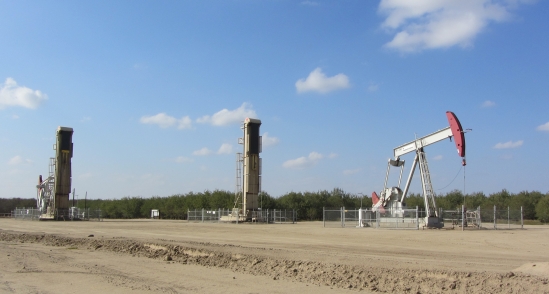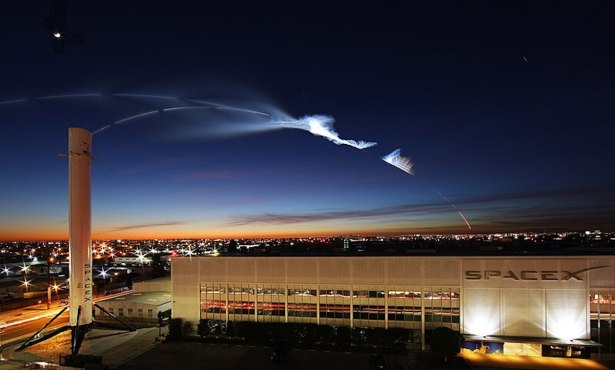New Study Counts Fracked Wells’ Proximity to Private Water Wells
Analysis by UCSB Researchers Furthers EPA Public Well Study

“Hydraulic fracturing near domestic groundwater wells” is the title of a paper that should make anyone who drinks water sit up and take notice. Published in October in the Proceedings of the National Academy of Sciences by UCSB geophysicist Scott Jasechko and environmental engineer Debra Perrone, the paper takes a detailed look at all but one of the 15 states in which oil is extracted by fracking, as hydraulic fracturing is known, creating a detailed analysis, despite the great variety of data collected by the states, of how close nearly 27,000 fracked wells are to private water wells, measured both in horizontal and vertical distances.
The majority of the two years they spent combing state files involved coming up with apples-to-apples comparisons of the data, said Jasechko. Some statistics went back 100 years or more, others began this millennium, and the state databases varied in how much detail or lack of detail they contained. The modern availability of GPS made the information on well location much more reliable, he said, which helped lead them to analyze water wells dug between 2000 and 2014 and fracked wells actively stimulated in 2014 in the 14 states for which they could obtain reliable records. West Virginia was the holdout; though the state had information on fracked wells, it had none on groundwater wells.
The proximity of fracked wells to municipal, or public, water supplies was examined in an Environmental Protection Agency paper published in 2016. Jasechko and Perrone’s paper follows on that data, providing information on domestic or private water wells, which are not regulated by the EPA nor by most jurisdictions, including the State of California.
The period between 2000 and 2015 saw a tenfold increase in the quantity of hydraulically fractured wells, the paper states. Half of those in operation in 2014 were found to be within 2-3 kilometers, horizontally, of one or more public or private groundwater wells built between 2000 and 2014. None were in Santa Barbara County, Jasechko said, though two in neighboring Ventura County were within less than two miles of a groundwater well that the California database labeled “Water Supply Domestic,” and numerous similar water wells were north of Wasco in Kern County.
Nationwide, Texas had the highest percentage of water wells within 2 kilometers of fracked wells, ranging from Martin County’s 88 percent to Karnes County’s 60 percent. Also in the 50 percent or higher range were counties in North Dakota and Oklahoma.

In terms of conventional oil and gas wells, more than half of those producing in the U.S. in 2014 were within 2 kilometers, or 1.2 miles, of a domestic water well. According to the tables in the paper, 100 percent of the private water wells in several counties in Kansas, North Dakota, Ohio, Pennsylvania, and Texas were that close to at least one conventional oil well. For Tuscarawas County in Ohio, that’s 2,040 private water wells.
Oil wells, whether conventional or hydraulically fractured, and drinking water wells are usually drilled to very different depths, the paper makes clear. Looking at the verticality, the paper found that 99 percent of fracked wells within 2 kilometers of a domestic water well were 1,000 meters below the water well. The fracture networks “typically extend no more than 600 [meters] above well perforations.” The one percent with less than 600 meters between them and a water well — the shallowest was 86-173 meters and close to 10 water wells — amounted to more than 200 fracked wells, mostly in Texas and Oklahoma. Most were associated with one water well, though some as many as 20.
These statistics as compiled in the PNAS paper provide an overview of what Perrone calls “hotspots,” or counties in which large numbers of domestic water wells lie relatively close to either a conventionally operated or hydraulically fractured oil well. With regulatory resources thin in some locations, “We can use these hotspot analyses to focus resources,” Perrone said, “so that we can learn more about oil and gas contamination mechanisms: How often do they occur, and do they have an impact on groundwater?”
Perrone and Jasechko’s paper describes the “challenging” lack of consistent information on spills or leaks, the integrity of wells, groundwater quality before and after nearby operations commenced, and the types of chemicals used in the fracturing. Systematic wording for wells used for drinking or irrigation, for instance, would help, said Jasechko, as would linking well-abandonment to construction records.



